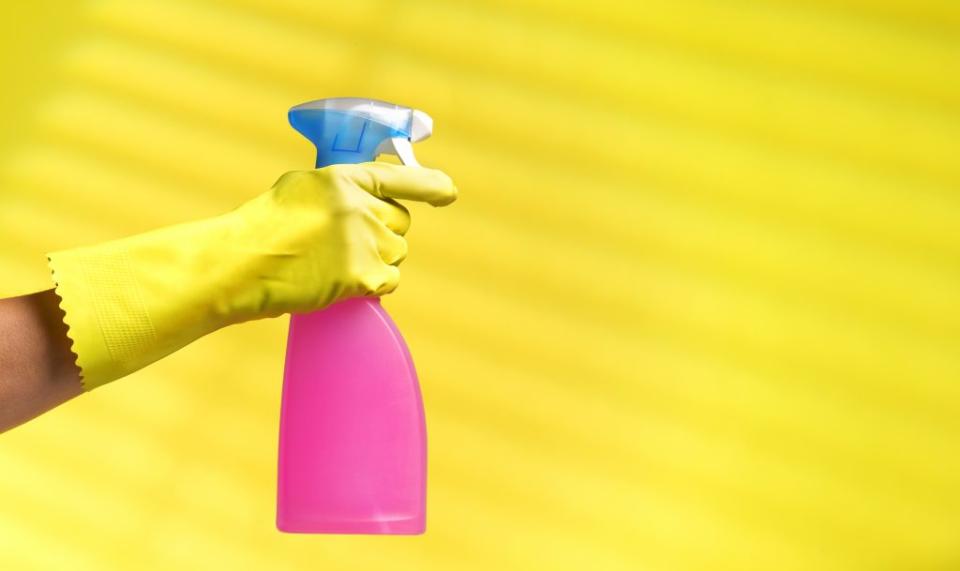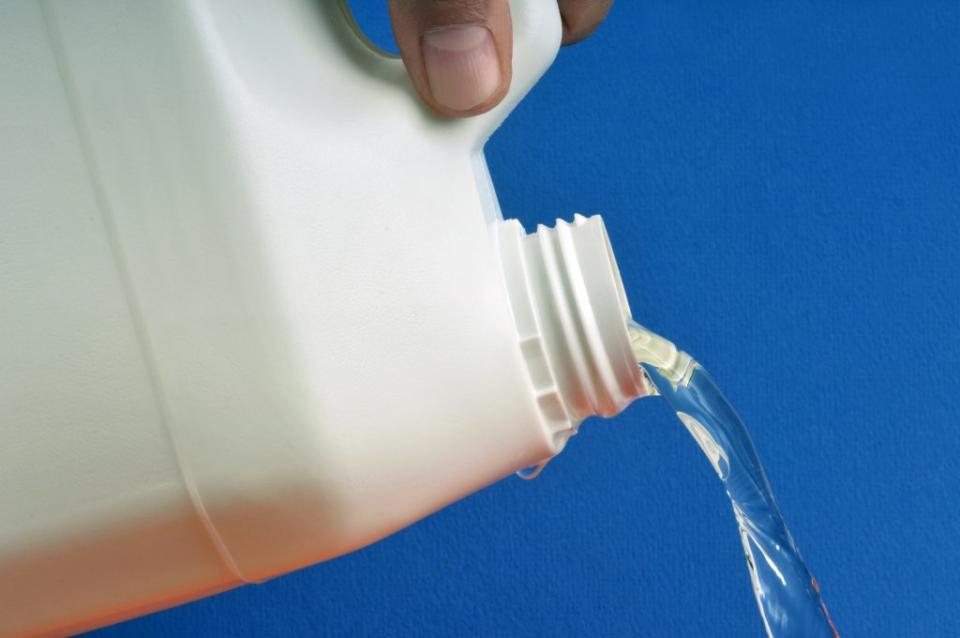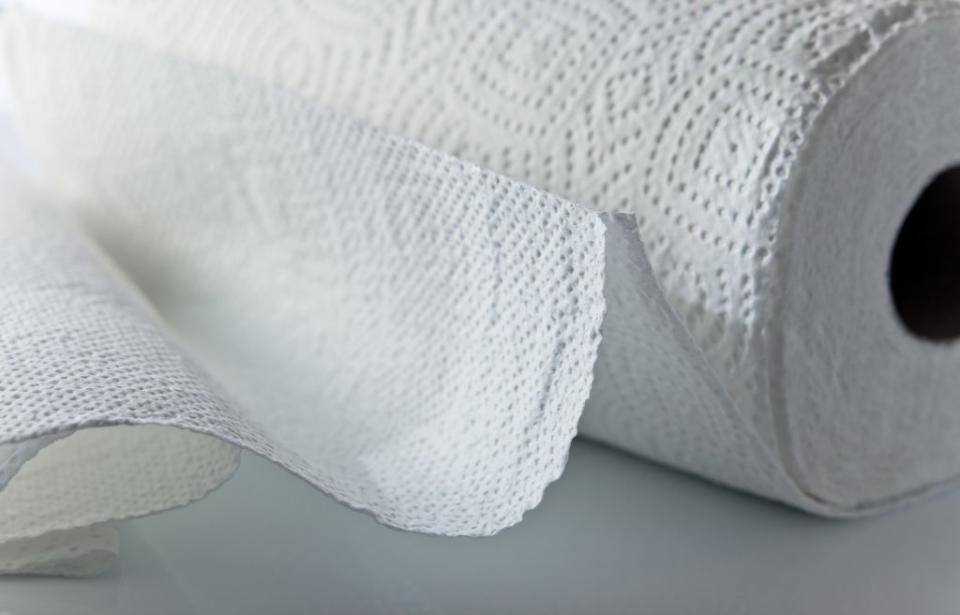Here’s where to find disinfectant sprays and wipes in-stock online
Our team is dedicated to finding and telling you more about the products and deals we love. If you love them too and decide to purchase through the links below, we may receive a commission. Pricing and availability are subject to change.
Especially now during a global pandemic — it’s essential to take care of yourself. And part of that is keeping your home, hands and belongings clean.
According to the Centers for Disease Control and Prevention (CDC), “transmission of novel coronavirus to persons from surfaces contaminated with the virus has not been documented.” People contract the virus mostly through close contact with an infected person through respiratory droplets (hence, the CDC recommends wearing a mask).
However, the CDC also says that “it may be possible that a person can get Covid-19 by touching a surface or object that has the virus on it and then touching their mouth, nose or possibly their eyes.” While it’s not believed to be the main way people contract the virus, scientists are still researching how the virus spreads.
While washing your hands and disinfecting your most-used items (like your phone) might seem obvious, there are a few other best cleaning practices you can use to help limit the spread of illness.
One thing to keep in mind is the difference between cleaning and disinfecting. Cleaning simply means removing dirt and other impurities from a surface, which in turn, can help remove germs. On the other hand, disinfecting doesn’t remove germs; it kills them. You should first clean a surface, then disinfect it, removing the germs and killing whatever is left.
The CDC recommends wearing gloves to clean and disinfect, especially if you’re sanitizing an area potentially exposed to someone with the virus. “Clean and disinfect high-touch surfaces daily in household common areas (e.g., tables, hard-backed chairs, doorknobs, light switches, remotes, handles, desks, toilets, sinks),” they wrote in a report on cleaning and disinfecting.
Cleaning products like Lysol Disinfectant Spray and Pine-Sol Original Multi-Surface Cleaner were tested and proven to kill COVID-19 by the Environmental Protection Agency (EPA). You can see the EPA’s full list of approved cleaners on its website.
Unfortunately, several stores have been selling out of these products. But we did some digging and found everything you need that’s still available. You can shop for household disinfectants that will kill germs in your home below.
Disinfectants for killing germs

Joseph Fair, a virologist, epidemiologist and NBC News Science contributor, spoke on the Today Show stating that “common cleaners containing bleach, alcohol, hydrogen peroxide or ammonia as their active ingredient can help kill off germs from infectious viruses.”
“With the sprays, you can get more penetration. With the wipes, they’re more convenient. The big thing is you want to put them on the surface, and you want to let them dry on the surface. Don’t wipe them in; let them dry,” Fair said.
“Just spray as much as you can, let it dry. If it’s been there longer than 10 minutes, they say 10 minutes is kind of the maximum; you can go ahead and dry it off,” he added.
Comet Disinfecting Cleaner with Bleach, Pack Of 8 at Staples, $66.99
Clorox Disinfecting Wipes, Crisp Lemon on Amazon, $17.99
Clorox Disinfecting Wipes Value Pack Of 3 on Amazon, $34.50
Clorox Commercial Solutions Clorox Clean-Up All–Purpose Cleaner with Bleach at Staples, $5.99
Fantastik Multi-surface Disinfectant Degreaser at Staples, $3.99
Lysol Advanced Deep Clean Disinfecting All Purpose Cleaner at Staples, $4.49
Lysol Disinfectant Spray Crisp Linen, Pack Of 3 on Amazon, $36.95 (Orig. $38.75)
Lysol Disinfectant All Purpose Cleaner, Lemon Scent on Amazon, $19.99
Lysol Disinfecting Wipes, Pack Of 2 on Amazon, $27
Mr. Clean Liquid Antibacterial Multipurpose Cleaner at Staples, $2.49
Nu-Foamicide EPA Registered 1 Gal. All-Purpose Cleaner Concentrate at Home Depot, $36.99
Pine-Sol Multi-Surface Cleaner at Staples, $7.29
Pine-Sol All-Purpose Cleaners, Lavender Clean, 3 Cartons at Amazon, $29.99
Sanidate Sanitizing Wipes at Staples, $8.99
Sentinel II Disinfectant, Citrus Scent Liquid-1 Gallon at Amazon, $39
Windex Multi-Surface Disinfectant Sanitizer Cleaner at Staples, $5.49
Windex Antibacterial Multi-Surface Cleaner Spray Bottles (2-Pack) on Amazon, $19.49
Bleach

According to the CDC, you can also use bleach to clean your home, as long as you properly dilute it. It recommends mixing five tablespoons (1/3rd cup) bleach per gallon of water or four teaspoons bleach per water quart. However, check the label to ensure your bleach has a sodium hypochlorite concentration of 5–6 percent (splash-less and chlorine-free bleach do not meet this requirement; therefore they are not effective disinfectants).
Clorox Regular Concentrated Liquid Disinfecting Bleach Cleaner at Home Depot, $4.48
Clorox Regular Concentrated Bleach, 121 Fluid Ounces on MSC Industrial Supply, $10.84
Clorox Performance Bleach 121 Ounces (3-Pack) at Amazon, $29.20
Cloralen 121 Fluid Ounces Regular Bleach at Home Depot, $2.97
Clorox Commercial Solutions Clorox Germicidal Bleach, Concentrated, 121 Ounces at Staples, $10.79
Paper towels

While it’s important to be environmentally-friendly, using paper towels to clean helps reduce the number of germs. Once you’re done cleaning and disinfecting, throw out the paper towel to throw out the germs.
AmazonCommercial Adapt-a-Size Kitchen Paper Towels, Pack Of 12 on Amazon, $29.99
Bounty Paper Towels, Pack Of 8 at Office Depot, $15.99
Bounty 2-Ply Paper Towels, Pack Of 6 at Office Depot, $8.44
Bounty Select-A-Size Paper Towels, Giant Rolls, Pack Of 12 at Amazon, $40.50
Tree-Free 2-Ply Paper Towels, Pack of 6 at Grove, $9.95
HDX Paper Towels, 12-Rolls at Home Depot, $16.97
Mighty Bamboo Absorbent Towels, Pack Of 2 at ACE Hardware, $16.99
Scott Select-A-Size Paper Towel Pack Of 15 Rolls at Office Depot, $27.82
If you enjoyed this article, In The Know also covered how Lysol actually works to clean your home.
More from In The Know:
Starbucks copycat recipes: 10 Starbucks dupes to try at home
TikTok users claim this viral product is making their hair “grow like crazy”
Who is Tanner Buchanan? Meet the star of “Cobra Kai”
The ‘world’s most powerful facial’ costs only $13 on Amazon
The post Here’s where to find disinfectant sprays and wipes in-stock online appeared first on In The Know.

 Yahoo Finance
Yahoo Finance 